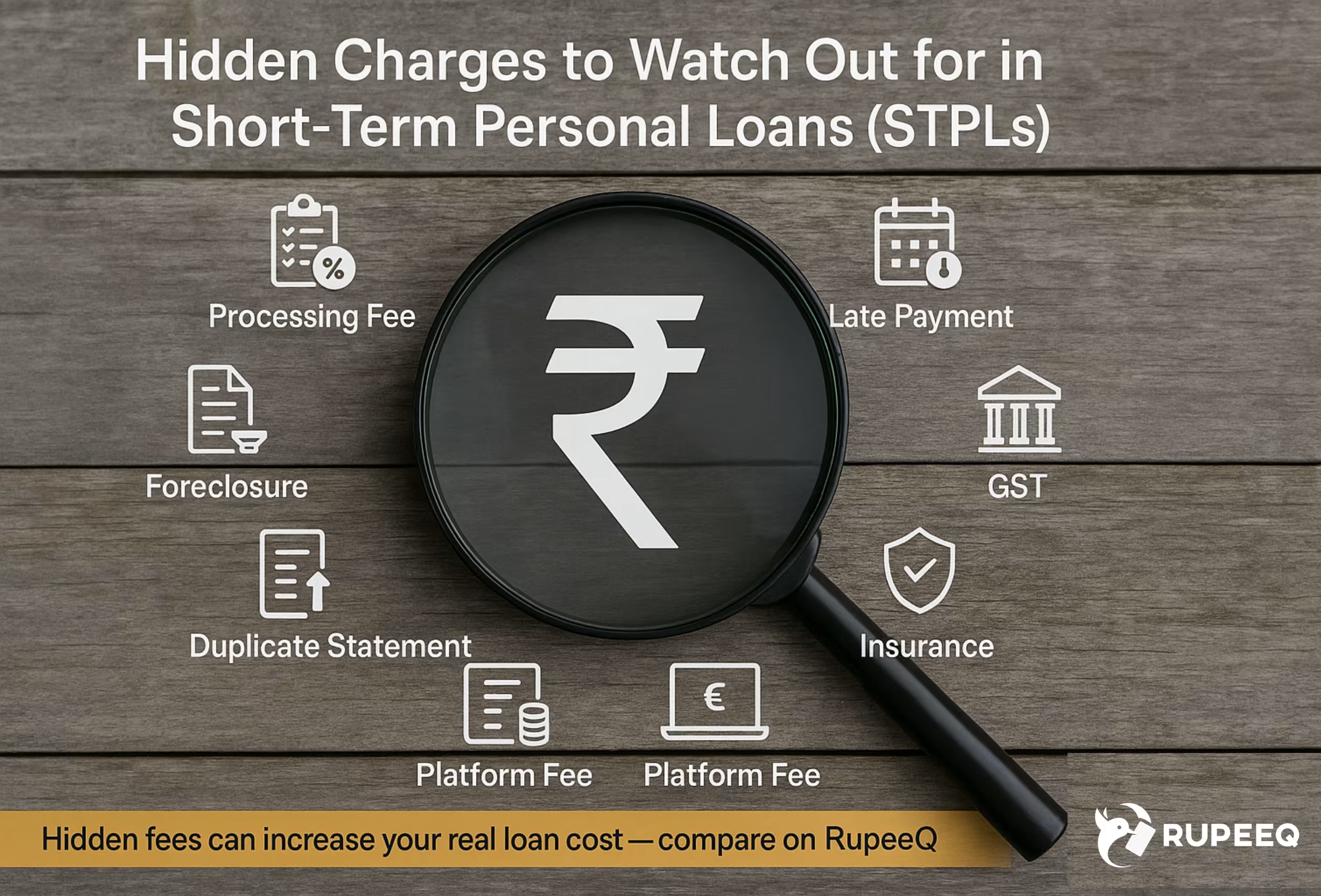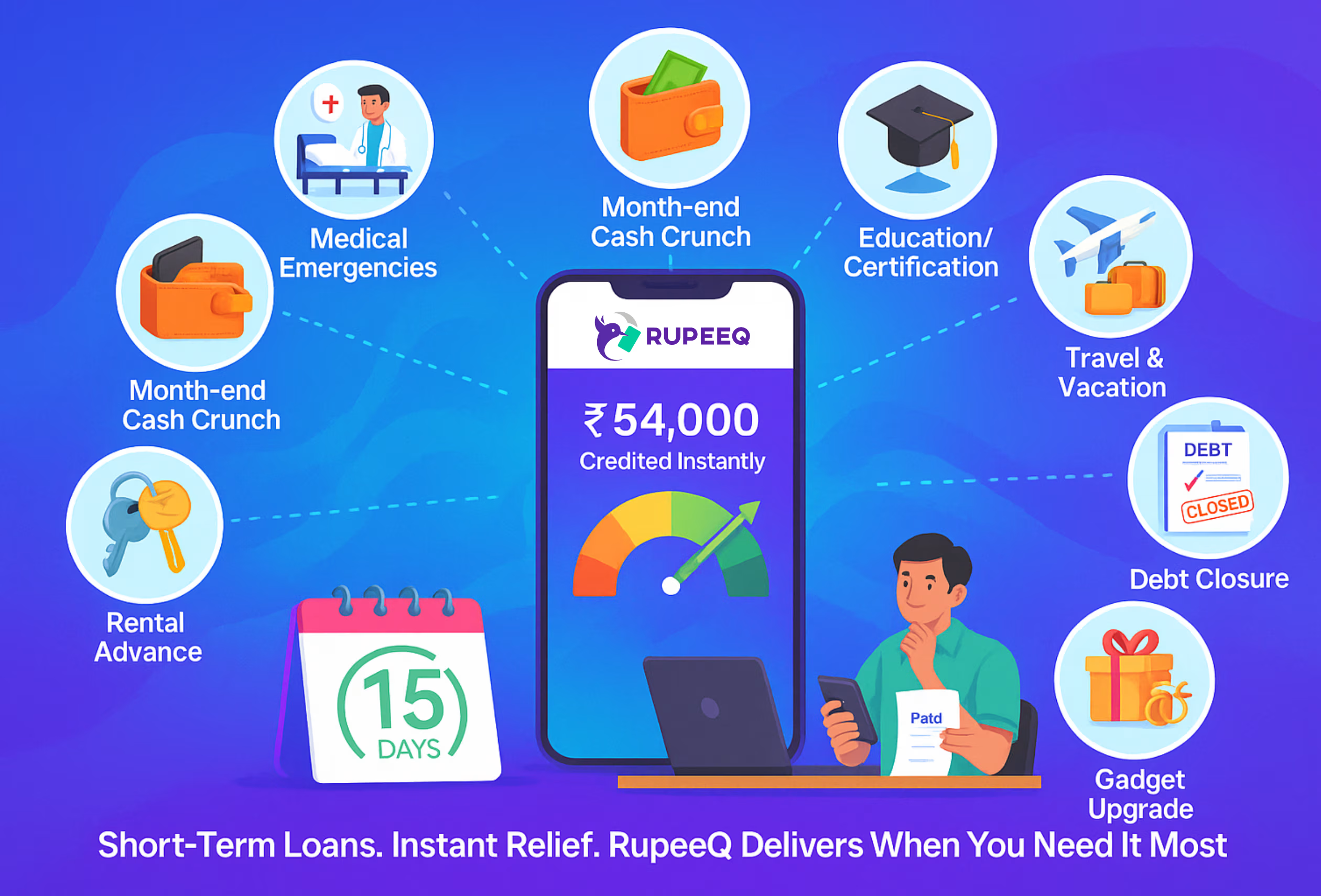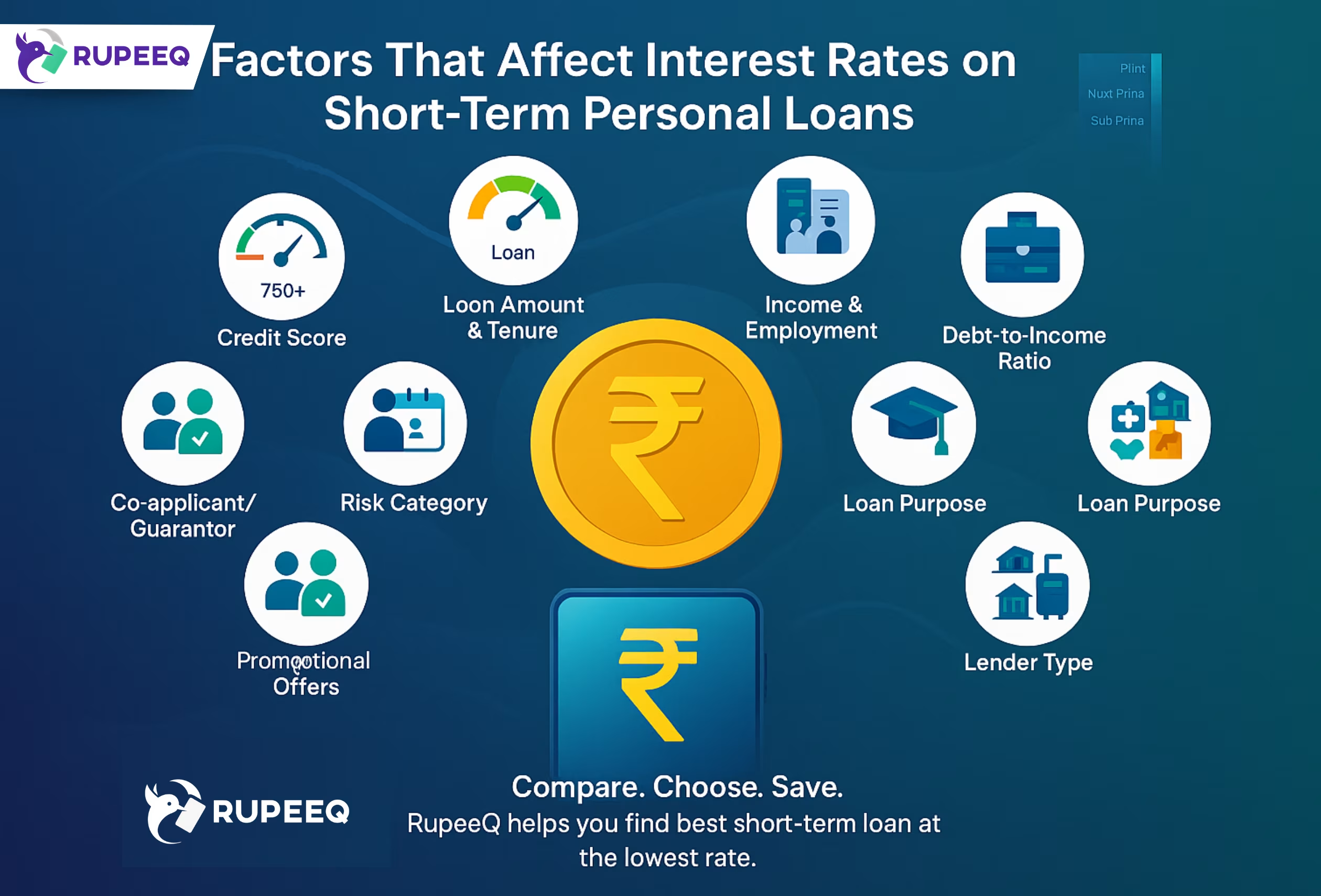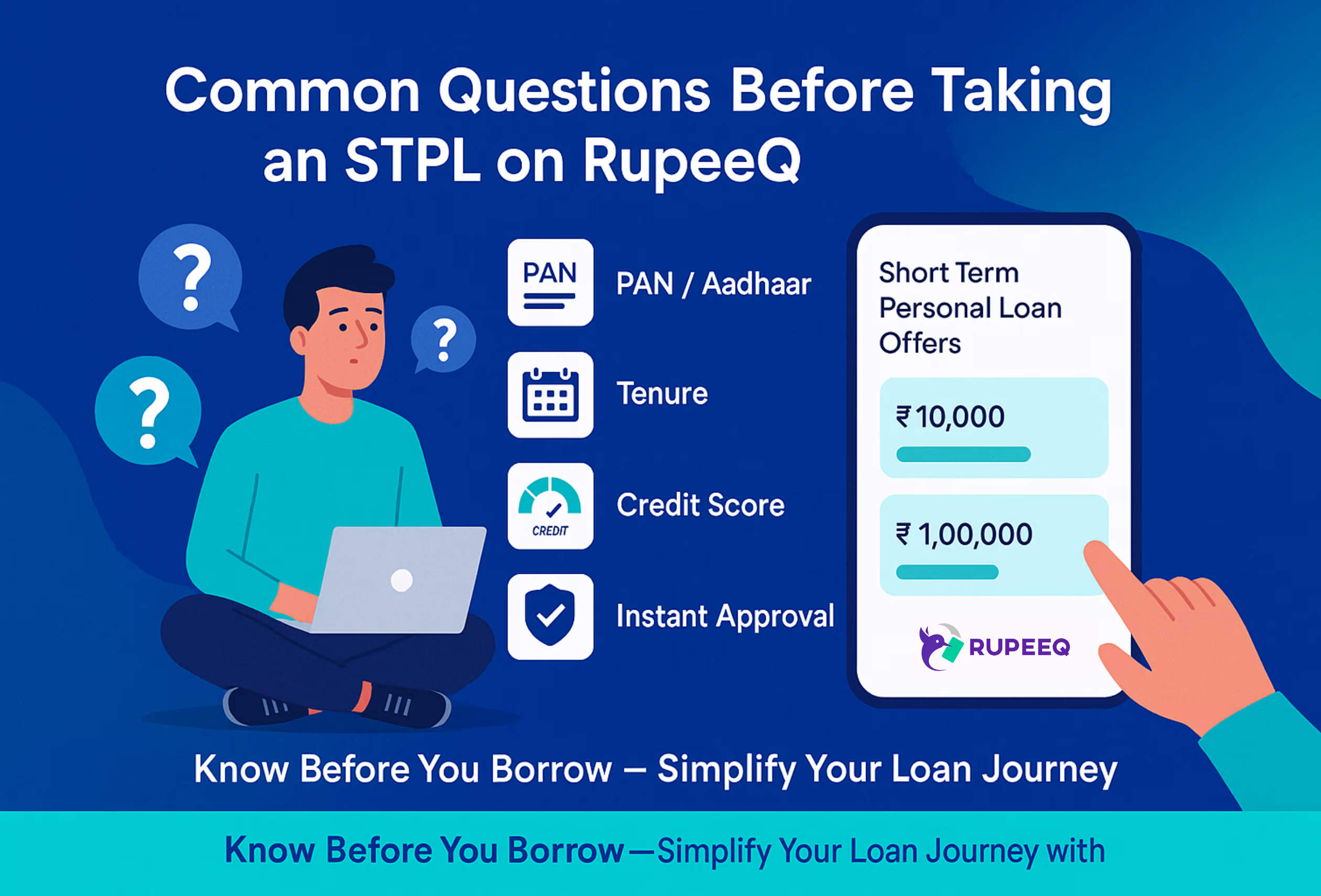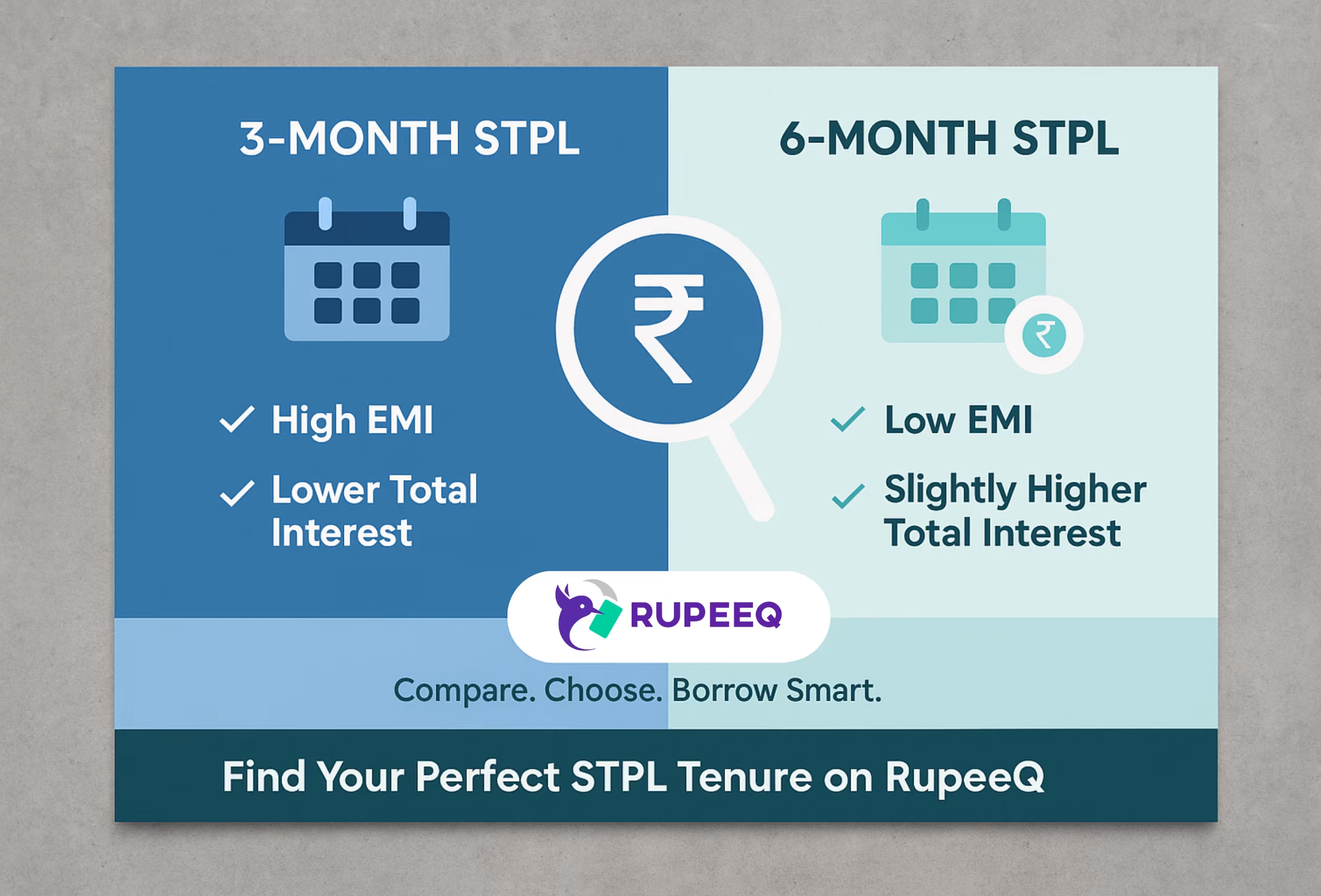Short Term Personal Loans (STPLs) are becoming increasingly popular among young professionals and salaried individuals in India. These loans offer small-ticket financing—often under ₹1 lakh—with quick disbursal and minimal paperwork. While the interest rate is the most talked-about aspect, there are often lesser-known charges that can catch borrowers off guard.
In this blog, we explore the hidden charges commonly associated with STPLs and how being aware of them can help you make informed borrowing decisions.
Processing Fees on STPLs
Processing fees are one of the first charges applied to your short term loan. This fee is deducted upfront from the loan amount before disbursal.
What you need to know:
- It typically ranges from 1% to 3% of the sanctioned loan amount.
- It is non-refundable, even if you repay early.
- Some lenders may charge a flat fee instead of a percentage.
Example:
If you take a ₹50,000 loan and the processing fee is 2%, ₹1,000 will be deducted, and you will receive ₹49,000 in your bank account.
RupeeQ Tip:
While comparing offers on RupeeQ, always check the “net disbursal amount” to understand how much money you will actually receive after processing fees.
Prepayment Charges or Foreclosure Penalties
Prepayment or foreclosure means closing your loan before the end of the tenure. Some lenders charge a fee for early closure.
Key facts:
- Charges range from 2% to 5% of the outstanding loan amount.
- Some lenders offer zero foreclosure charges if you repay after a certain number of EMIs.
Borrowers who plan to repay early must calculate if the savings on interest outweigh the foreclosure fee.
Example:
You owe ₹30,000 after 3 months on a 6-month loan. Foreclosure fee at 3% would be ₹900.
Late Payment Charges and Penal Interest
Late EMI payments invite both a fixed penalty and an additional penal interest on the overdue amount.
Typical charges include:
- A fixed late fee (e.g., ₹500 to ₹1,000 per missed EMI)
- Penal interest at 2% to 4% per month on the overdue amount
These charges can compound quickly and damage your credit score if not addressed in time.
RupeeQ Tip:
Set auto-debit mandates or payment reminders when taking a loan through RupeeQ. Avoiding just one missed EMI can save you a lot in penalties and credit damage.
Documentation or Verification Charges
Some lenders may charge a small fee for:
- Address or income verification
- Physical document pickup
- KYC validation
This fee is often included in the processing charges but can sometimes be listed separately.
Always ask for a break-up of charges to ensure you’re not paying more than necessary.
Loan Cancellation Charges
If you decide to cancel your STPL after approval and before disbursal (or within a cooling-off period), lenders may charge a fee.
- Generally ₹500 to ₹1,000
- May also include non-refundable processing fees
This rarely occurs but is important if you’re comparing multiple offers and applying to multiple lenders.
Bounce Charges on EMI Payment
When your EMI auto-debit fails due to insufficient funds or incorrect mandate setup, a bounce charge is levied.
- Typical range: ₹300 to ₹750 per bounce
- Multiple bounces in one cycle may invite additional penalties
Frequent bounces are red flags for lenders and can affect future loan eligibility.
GST and Tax Implications
Almost all service charges mentioned above attract 18% GST.
For example:
- Processing fee: ₹1,000 → GST @ 18% = ₹180 → Total = ₹1,180
- Bounce charge: ₹500 → GST @ 18% = ₹90 → Total = ₹590
Ensure your budget accounts for these indirect costs that are usually not included in promotional loan offers.
Loan Insurance or Value-Added Service Add-ons
Some lenders bundle insurance products (loan protection, life insurance, etc.) or premium account services with your STPL.
These add-ons may be:
- Optional, but selected by default in the application form
- Costing anywhere between ₹500 to ₹5,000
Unless clearly explained, these services can quietly increase your effective borrowing cost.
RupeeQ Tip:
On the RupeeQ platform, such bundled charges are clearly disclosed. Always uncheck unwanted services before final submission.
Platform or Convenience Fees
Digital-first lenders and loan aggregators sometimes add a convenience fee for their platform usage. This may be a:
- Flat fee (e.g., ₹199–₹499)
- Or a small percentage (0.5%–1%) of the loan amount
While some platforms waive this for first-time users or during festive offers, it’s still important to check.
Duplicate Statement or Account Management Charges
Once your loan is disbursed, you may incur charges for:
- Printed loan statements
- Loan re-scheduling requests
- NOC (No Objection Certificate) re-issuance
- Account closure certificates
Though these are minor—typically ₹100 to ₹500—they add up if you frequently request documentation.
Comparative Table of Common Hidden Charges
| Charge Type | Range | Applicability |
| Processing Fee | 1% – 3% of loan amount | Deducted upfront |
| Foreclosure Charges | 2% – 5% of outstanding | If closed early |
| Late Payment Penalty | ₹500 – ₹1,000 + 2–4% p.m. | Per missed EMI |
| Bounce Charges | ₹300 – ₹750 per instance | Auto-debit failure |
| Insurance Add-ons | ₹500 – ₹5,000 | Optional, sometimes auto-selected |
| Documentation Fees | ₹100 – ₹500 | For verifications or resends |
| Platform/Convenience Fee | ₹199 – ₹499 | One-time platform charge |
| GST on Above Charges | 18% | Applied to all service-related charges |
How to Minimize the Impact of Hidden Charges
Here are a few best practices to ensure you don’t fall into the hidden cost trap:
- Read the loan agreement carefully before signing.
- Ask for a complete charges sheet from the lender or check the platform FAQ.
- Compare the total cost of borrowing, not just interest rates.
- Unselect unnecessary services during the application process.
- Use platforms like RupeeQ that offer full transparency across charges.
Final Thoughts
Interest rates are just one part of the loan equation. Hidden charges can often make a seemingly affordable loan expensive. Being aware of processing fees, foreclosure charges, bounce penalties, and other service fees helps you evaluate the real cost of your short term personal loan.
Before applying, take the time to compare lenders not just on rates, but also on the fine print. A loan with a slightly higher interest rate but zero hidden charges may end up being cheaper than a low-interest offer loaded with extra fees.

